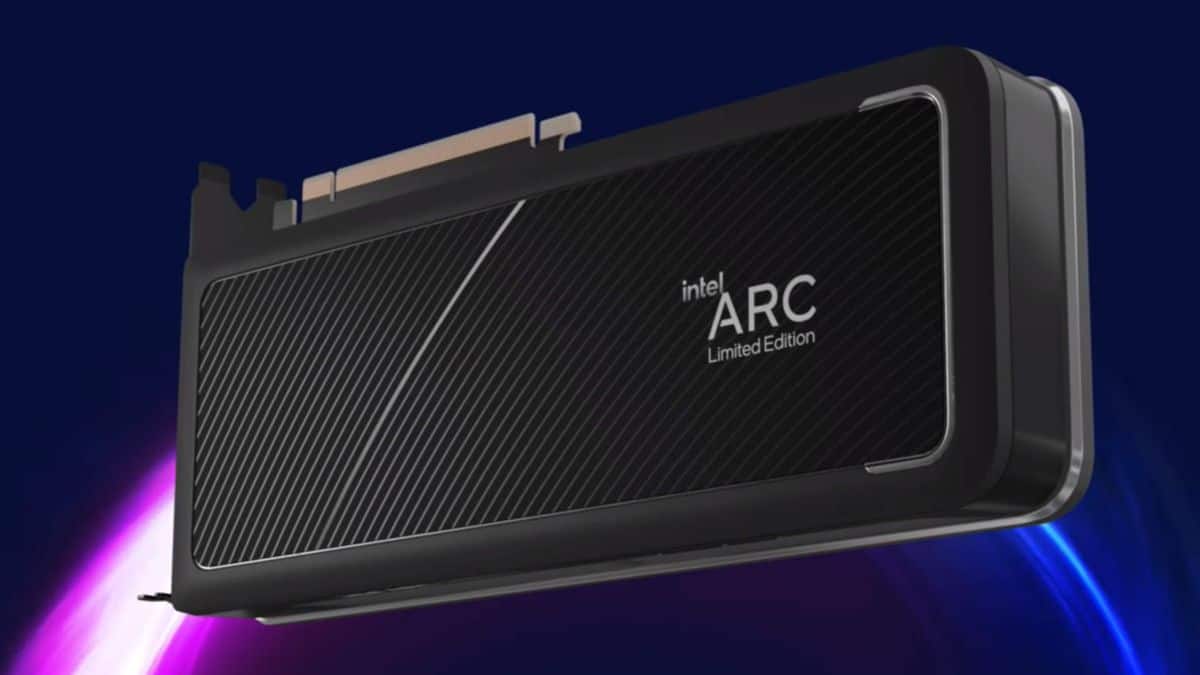Intel’s upcoming Celestial GPUs have generated significant interest among tech enthusiasts and gamers alike. These graphics cards represent the third generation of Intel’s discrete GPU architecture, following Alchemist and Battlemage. Intel plans to launch Celestial GPUs in 2026, marking a crucial step in the company’s efforts to compete with NVIDIA and AMD in the high-performance graphics market.
Rumors suggest that Celestial GPUs will offer substantial improvements in performance and efficiency over their predecessors. Intel has already begun laying the groundwork for Xe3 Celestial graphics in Linux, indicating active development. While specific details about the architecture remain scarce, industry experts anticipate advanced features tailored for gaming and content creation.
The arrival of Celestial GPUs could reshape the competitive landscape of the graphics card market. Intel’s continued investment in discrete GPU technology demonstrates its commitment to challenging established players and providing consumers with more options. As development progresses, tech enthusiasts eagerly await further information on specifications, performance metrics, and pricing.
Intel’s Celestial GPUs: A New Challenger Approaches
Intel is no stranger to the integrated graphics market, but the company has been making moves to compete in the discrete GPU space as well. Their upcoming Celestial GPUs are generating a lot of buzz. Here’s what we know so far about these promising graphics cards.
The Road to Celestial
Intel’s first foray into the discrete GPU market was with their Arc Alchemist series. While Alchemist showed potential, it had some issues at launch. This has not deterred Intel. They are pushing forward with their plans for future generations of GPUs. Celestial is the codename for their next-next-generation GPUs, following Battlemage (expected in 2024/2025).
Projected Specifications
Exact specifications for Celestial are still under wraps. However, Intel has indicated that Celestial GPUs will target the ultra-enthusiast segment. This means they are aiming to compete with the top-tier offerings from NVIDIA and AMD.
Here’s what we can reasonably expect:
| Feature | Expected |
|---|---|
| Architecture | Xe2-HPG |
| Process Node | 3nm or lower |
| Memory | GDDR7 |
| Performance Target | Ultra-enthusiast (e.g., competing with NVIDIA’s Titan series) |
| Features | Ray Tracing, AI-powered upscaling, and other advanced features |
Release Expectations
Intel has not announced a concrete release date for Celestial. Given that Battlemage is projected for 2024/2025, we can anticipate Celestial to arrive sometime around 2025 or later.
Factors Influencing Release
- Competition: The GPU market is dynamic. Intel might adjust its release schedule based on the offerings from NVIDIA and AMD.
- Software Optimization: Ensuring drivers and software are optimized for Celestial’s hardware will be crucial for a successful launch.
- Production Capacity: Global chip shortages have impacted the tech industry. Securing adequate production capacity will play a role in Intel’s timeline.
What This Means for Gamers and Creators
If Intel delivers on its promises, Celestial GPUs could shake up the GPU market. More competition is always good news for consumers. It can lead to:
- Lower Prices: Increased competition often puts downward pressure on prices.
- More Innovation: As companies vie for market share, we can expect to see faster innovation and more compelling features.
- Better Products: Competition drives companies to improve their products to stay ahead.
Looking Ahead
Intel Celestial GPUs are poised to be a significant player in the future of graphics technology. While we await more concrete details from Intel, the anticipation is certainly building. Keep an eye out for updates as we get closer to their potential release.
Key Takeaways
- Intel Celestial GPUs are set for a 2026 release, following Battlemage in 2024
- Development is underway, with Intel preparing software support for the new architecture
- Celestial GPUs aim to boost Intel’s position in the competitive discrete graphics market
Overview of Intel Celestial GPUs
Intel’s Celestial GPUs represent the company’s third generation of dedicated graphics cards. These GPUs aim to compete with high-end offerings from AMD and Nvidia, leveraging advanced manufacturing processes and innovative architectures.
Expected Specs and Performance
Intel Celestial GPUs are anticipated to offer significant performance improvements over their predecessors. Preliminary support for Xe3 “discrete” GPUs has been spotted in hardware monitoring software, hinting at their development progress.
Key features may include:
- Enhanced ray tracing capabilities
- Improved AI acceleration
- Higher core counts and clock speeds
- Increased memory bandwidth
These advancements could position Celestial GPUs as strong contenders in the high-performance gaming and content creation markets.
Comparison to AMD and Nvidia Offerings
Intel’s Celestial GPUs are expected to challenge AMD and Nvidia’s top-tier products. The graphics card market is highly competitive, with each company striving for performance leadership.
Potential advantages for Intel:
- Advanced manufacturing processes
- Novel architectural approaches
- Aggressive pricing strategies
Intel may target specific performance segments where AMD and Nvidia have established dominance. The success of Celestial GPUs could reshape the graphics card market landscape, offering consumers more choices in the high-end segment.
Manufacturing Process Innovations
Intel’s Celestial GPUs are rumored to use TSMC’s 3nm process, a significant leap from previous generations. This advanced node could provide several benefits:
- Improved power efficiency
- Higher transistor density
- Enhanced thermal characteristics
The 3nm process may allow Intel to pack more cores and features into their GPUs while maintaining reasonable power consumption. This manufacturing advantage could be crucial in competing with AMD and Nvidia’s offerings.
Intel’s collaboration with TSMC for fabrication demonstrates the company’s commitment to leveraging cutting-edge technologies for their graphics products.
Anticipated Release and Market Impact
Intel’s Celestial GPUs are poised to shake up the high-end graphics card market. The upcoming release has sparked interest among tech enthusiasts and industry analysts alike, with potential impacts on both laptop and desktop segments.
Potential Launch Window
Intel’s Celestial GPUs are expected to debut after the Battlemage series. While no official date has been announced, industry insiders speculate a launch in late 2025 or early 2026.
CES 2025 could serve as a platform for Intel to showcase early prototypes or teasers. This aligns with Intel’s previous GPU release patterns.
The launch window may coincide with Intel’s Panther Lake CPU generation. This timing could allow for optimized integration between CPUs and GPUs.
Industry Analysts’ Expectations and Predictions
Analysts predict Celestial GPUs will target the high-performance segment. They expect significant improvements in ray tracing and AI capabilities.
Performance metrics are anticipated to compete with NVIDIA and AMD’s top-tier offerings. Power efficiency is likely to be a key focus area for Intel.
Pricing strategies remain uncertain. Analysts suggest Intel may adopt aggressive pricing to gain market share.
Key features analysts are watching for:
- Advanced memory technologies
- Enhanced gaming performance
- Improved content creation capabilities
Impact on High-End GPU Landscape for Laptops and Desktops
Celestial GPUs are expected to challenge the duopoly of NVIDIA and AMD. This could lead to more competitive pricing and faster innovation cycles.
For laptops, Celestial might enable thinner designs with high-performance graphics. Desktop users could benefit from increased choice in the high-end segment.
Intel’s entry into the high-end market may prompt competitors to accelerate their development timelines. This competition could result in more frequent product refreshes.
Intel’s Position in the Discrete GPU Market
Intel’s journey in discrete GPUs started with Arc Alchemist. Celestial represents their third generation, following Battlemage.
Tom Petersen, an Intel executive, has hinted at continued investment in discrete GPUs. This suggests Intel’s long-term commitment to the market.
Intel’s strategy appears to focus on steady improvement and market penetration. Each generation has shown progress in performance and features.
Challenges Intel faces:
- Building brand recognition in the GPU space
- Developing robust driver support
- Establishing relationships with game developers
Intel’s success with Celestial could solidify their position as a major player in discrete GPUs. This would mark a significant shift in the traditionally dual-vendor market.







